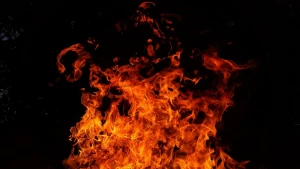
Ukrainian Kherson: Two years since liberation from Russian occupation
November 11, 2024, marks two years since Ukraine’s Armed Forces reclaimed Kherson. Here’s a look at the liberation, life during occupation, and the changes since de-occupation
Espreso revisits how the liberation of right-bank Kherson unfolded, what life was like under occupation, and the shifts following the de-occupation of several settlements. We also explore the current situation on the Russian-occupied left bank and any reconstruction plans once the region is fully reclaimed.
The city endured eight and a half months of occupation. In that time, residents faced daily terror, psychological pressure, and torture, but they held their ground. When liberation came, Kherson’s citizens greeted the Ukrainian Armed Forces with flags and cheers, shouting, "Kherson is Ukraine."
Kherson remains a Hero City, standing strong despite daily shelling and its proximity to enemy forces.
Life in Kherson during occupation
At the war’s start, Russian forces advanced swiftly through Ukraine, targeting key cities and regional centers. By early March 2022, Kherson was under occupation, despite fierce resistance from locals. Massive rallies in support of Ukraine were crushed with brutal force, and dissenters faced torture for defying the occupying forces.
Kherson residents formed underground groups to counter looting, track movements, and gather intel, which they relayed to Ukrainian forces. These partisan groups also boosted morale by tagging the city with patriotic graffiti, leaving bold "messages" for the occupying Russian troops.
"The resistance moevement kept many of us from breaking down. It wasn’t just about not switching sides; we organized every form of resistance possible, to the very end," shared Andriy Andryushchenko, a Kherson local and member of the underground, in a national broadcast.
Ukrainians not only endured Russian aggression but were also cut off from information, with TV and radio broadcasts shut down. Medicine became scarce, and informal markets sprang up as people lost jobs and refused to cooperate with their occupiers. Detentions, torture, captivity, and illegal deportations were all too common in these occupied areas.
Russian forces took over the Kherson City Council on April 25, and soon after, installed Ukrainian collaborators as "leaders." Volodymyr Saldo was placed in charge of the regional administration, while Oleksandr Kobets was named city mayor.
In typical Kremlin fashion, they sought to "legitimize" their presence, staging a sham referendum from September 23-27, with the outcome predetermined.
After nearly nine months of occupation, on November 11, Ukrainian forces officially entered Kherson, the hero city. Those 256 days are etched into people’s memories, though most wish to put them behind.
"We were cut off — no news, no light, no water. When we heard our troops had arrived, we cried. I still can’t speak about it calmly. We ran outside like kids, celebrating. Yes, there’s shelling now, and it’s hard, but we know we’re home," said local resident Tamara in an interview with Suspilne.
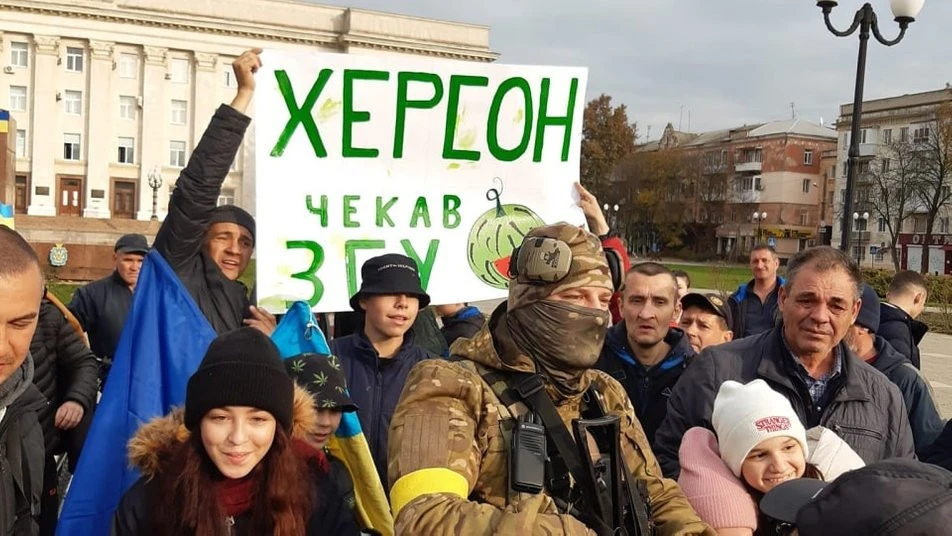
How the liberation of the right-bank Kherson region unfolded
The planning for the operation to reclaim the right-bank part of the Kherson region took considerable time. The Russian military leadership understood the strategic importance of Kherson very well. This route provides a direct path to Mykolaiv, Odesa, and other major cities, posing a serious threat to parts of the Vinnytsia region, explains Andriy Kovalchuk, commander of Ukraine's Operational Command "South," in an interview with Dmytro Komarov.
Posad-Pokrovske was a key settlement where the Russian defense line became heavily fortified. Russia had spent months reinforcing it with concrete bunkers, fortification blocks, deep trenches, and well-placed firing positions. From these strongholds, they launched heavy attacks on Ukrainian positions, making it extremely difficult to breach their line. However, Ukraine's artillery delivered powerful blows to their positions, emphasizes "Dyed," a sniper from Ukraine's "Hort" unit, on the joint broadcast marathon.
Moving toward the outskirts of Kherson lies the infamous Chornobayivka, whose airport became a national meme and a nightmare for Russian forces. It gained legendary status as Russian troops kept bringing in convoys of equipment, helicopters, and personnel, only to be repeatedly and accurately targeted by the Ukrainian Armed Forces. In total, there were 26 successful strikes on Chornobayivka. Regular Ukrainians kept count, and a humorous series called "Chornobayivka" was even released.
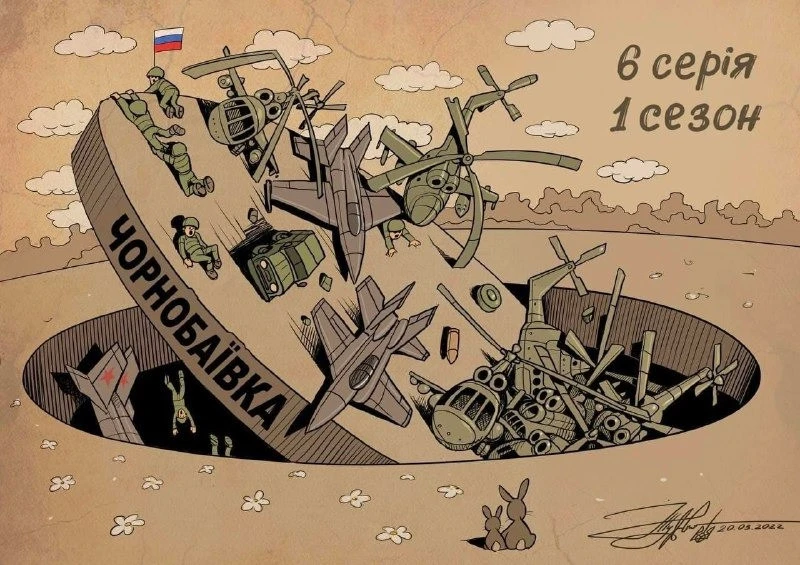
Photo: Chornobayivka: Season 1, Episode 6
Thanks to the Ukrainian military's successful offensive, tactical maneuvers, and well-planned strategies, Russian forces began retreating from the right bank, leaving behind minefields, destroyed homes, and heaps of scrap metal. The full details of this historic operation will be revealed after the war ends.
Life after the liberation of Kherson
Today, Kherson and the entire right-bank region endure relentless daily shelling, as Russian forces indiscriminately attack towns and villages. Civilians bear the brunt of these assaults. Additionally, parts of the Kherson region remain under occupation, forcing residents to fight for their freedom daily.
Each day brings heavy Russian shelling, with homes, shops, hospitals, and other civilian sites damaged or destroyed. But certain days mark particularly dark chapters. On May 3, 2023, Russian forces launched 98 separate attacks across Kherson and surrounding areas, firing 539 rounds from heavy artillery, tanks, Grad MLRS, aircraft, and drones. This brutal onslaught claimed 23 lives, leading the Kherson regional administration to declare three days of mourning.
Life in these reclaimed territories remains incredibly challenging. Although Ukrainian services have restored communications, many residents have left areas under constant fire. Yet, despite extensive destruction, many locals refuse to leave. In an interview with Suspilne, a resident emphasized his resolve, saying that although he has the chance to flee, he will stay because this is his home.
"Kherson is holding on, but it gets harder every day. We believe in the future and thank our defenders. I’m sure things will be okay," Mykhailo told Suspilne.
Ukrainian authorities vow to hold those responsible for atrocities accountable. “Everyone involved in crimes in Ukraine — both Russia’s top leadership and the direct perpetrators — will face justice,” the Foreign Ministry stated.
Ukrainian investigators are tirelessly documenting Russian war crimes and identifying collaborators aiding the occupiers’ brutal acts. Recently, Ukraine's Security Service identified 26 additional members of the so-called "Main Directorate of the Russian Ministry of Internal Affairs in the Kherson Region," who were responsible for kidnapping civilians and subjecting locals to horrific torture.
A man-made catastrophe: The destruction of the Kakhovka Dam
The southern region faced another devastating blow on June 6, 2023, when the Kakhovka Hydroelectric Power Plant was blown up. This catastrophe, both an ecological disaster and an act of terrorism, put around 80 settlements in flood danger, most of which remain under Russian control.
According to the UN, the estimated damage from the dam’s destruction exceeds $11 billion, including $2.79 billion in infrastructure losses and over $1.1 billion in housing damages. However, these figures are far from final, as the long-term impact of environmental devastation is challenging to measure.
In October 2023, a joint UN-Government report titled “Post Disaster Needs Assessment report of the Kakhovka Dam Disaster” revealed that communities in Mykolaiv, Kherson, Zaporizhzhia, and Dnipropetrovsk were severely affected. Around 100,000 Ukrainians were directly impacted, and approximately 20,000-30,000 homes were flooded. The dam’s destruction disrupted essential services in southern Ukraine, affecting electricity generation, clean drinking water, and river transport. It led to extensive property and infrastructure damage, environmental degradation, and the loss of cultural heritage.
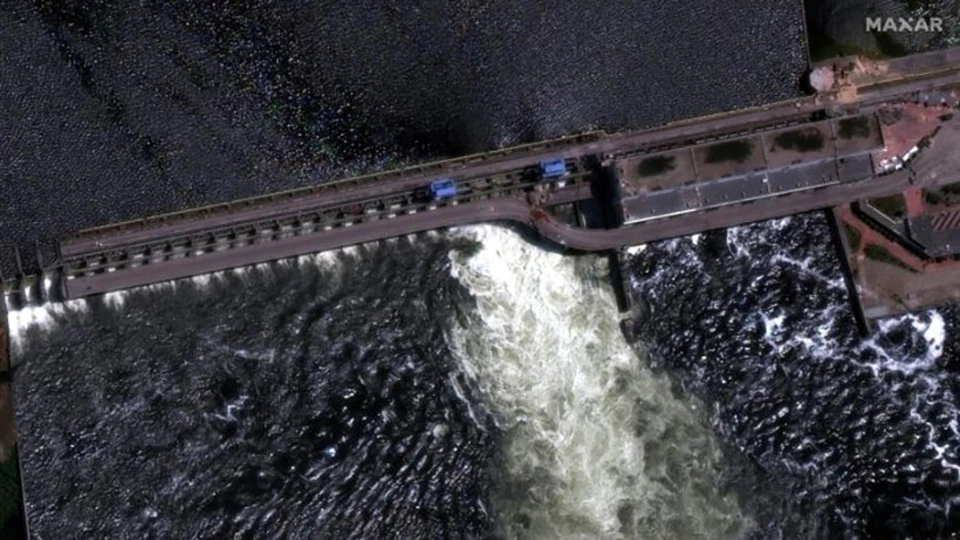
Antonivka Bridge and its role
The Antonivka Bridge over the Dnipro River, connecting Kherson with the left bank, is another key strategic point everyone recognizes. It’s crucial for logistics since it allowed Russia to supply its troops with equipment and ammunition. To cut off these supply routes, Ukrainian forces targeted the bridge in the summer of 2022. The structure was damaged, but not destroyed.
As they retreated from the right bank in the Kherson region, Russian forces blew up sections of the Antonivka Bridge to slow down the advance of the Ukrainian military. Now, Russian troops bombard the area around the crossing daily with bombs, missiles, and shells. The nearby village of Antonivka, a suburb of Kherson, has been hit particularly hard.
According to recent updates from the Institute for the Study of War (ISW), Ukrainian forces are pushing forward near the Antonivka Bridge, north of Oleshky. Geolocated footage published on October 27 confirms this progress.
“We’re seeing solid results in our operations — both in counter-battery efforts and other tactics. But this isn’t the time to disclose details if we want to secure a strong, lasting victory,” said Natalia Humeniuk, head of Operational Command "South," during a telethon broadcast.
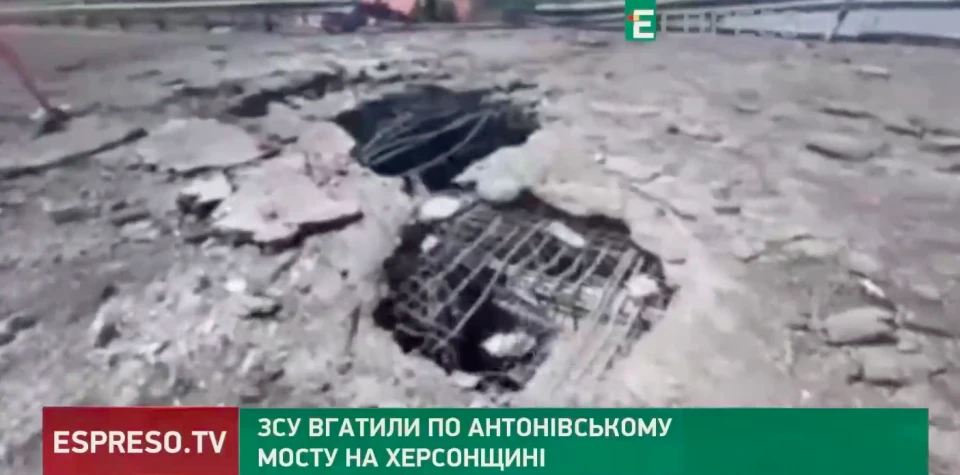
Headline translation: Ukraine's Armed Forces strike Antonivka Bridge, Kherson region
Vision for Kherson after full liberation
Although parts of Kherson remain under occupation, local leaders and residents are optimistic about the region’s future after liberation. The New Generation Public Center recently hosted the first “Steppe and Freedom” conference to discuss what Kherson’s future could look like. Organizers emphasize the importance of setting key development and restoration goals for the region now.
The region’s development is a pressing issue. Rethinking the economy, transforming the social sphere, amplifying cultural influence, and addressing environmental damage are all crucial steps for both local and national growth.
Support rally in 2024
In honor of the second anniversary of Kherson’s liberation, the “Yellow Ribbon” resistance movement, active in the occupied territories of southern Ukraine, is organizing an online rally on Instagram. The week-long rally aims to show support for occupied parts of left-bank Kherson and remind the occupiers: Kherson is Ukraine!
The organizers trace their movement back to occupied Kherson in April 2022, where they held their first pro-Ukrainian rally. Now, anyone can join this online event, no matter where they are.
To participate, just follow these steps:
- Find the Instagram page this.is.ua and leave a comment saying, “Kherson region is Ukraine” on selected posts.
- Get a tag from the organizers.
- Share the image in your stories.
- Post your stories to show solidarity in the online rally.
- News








